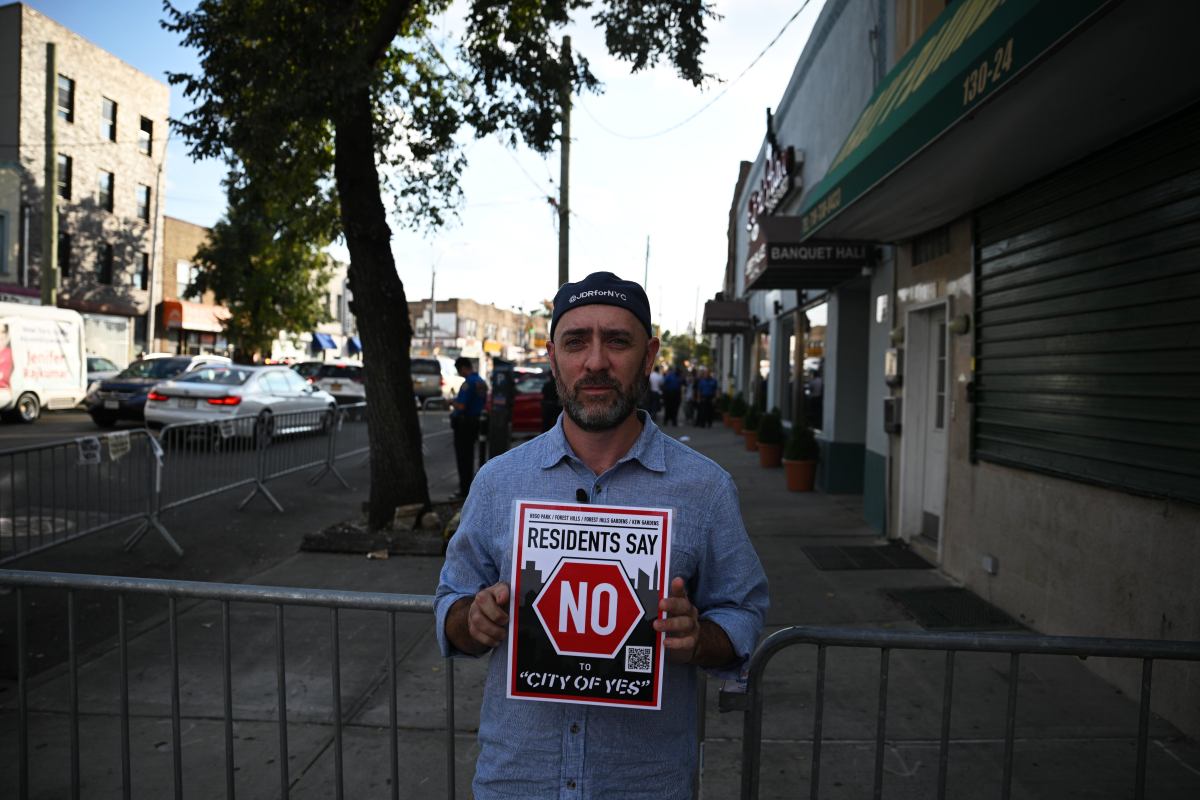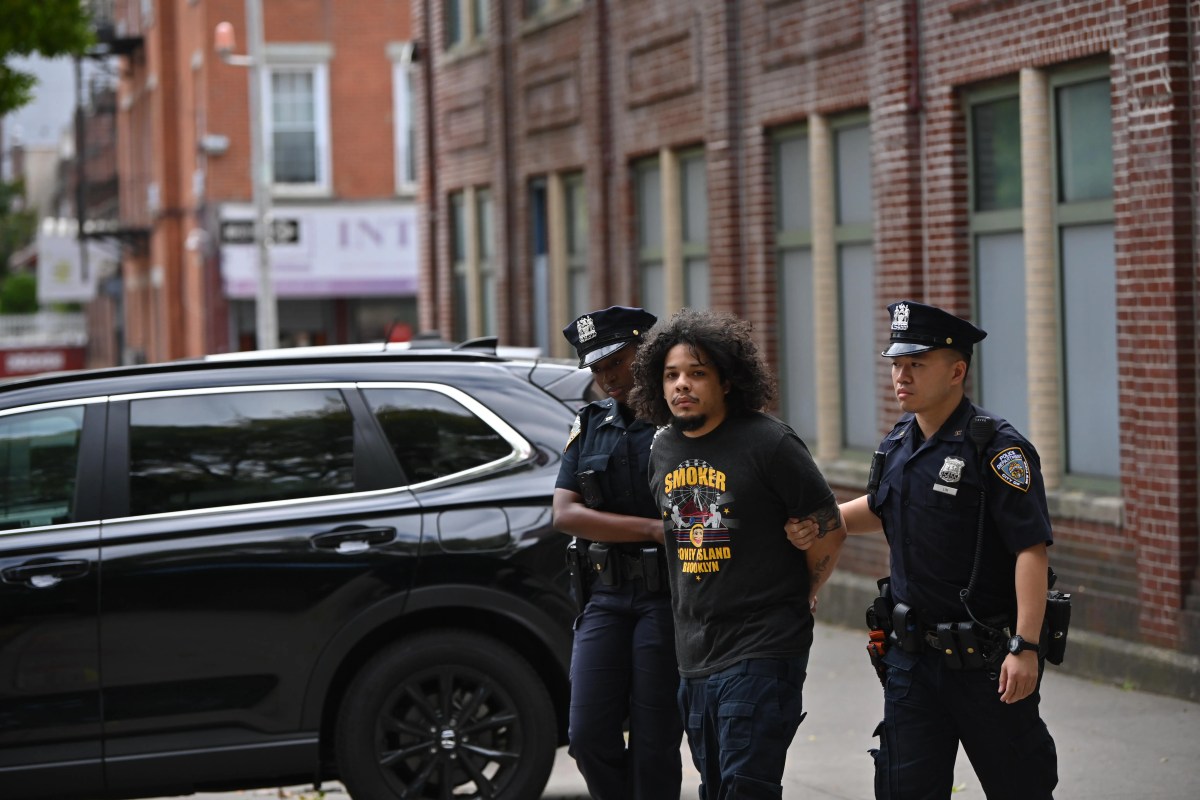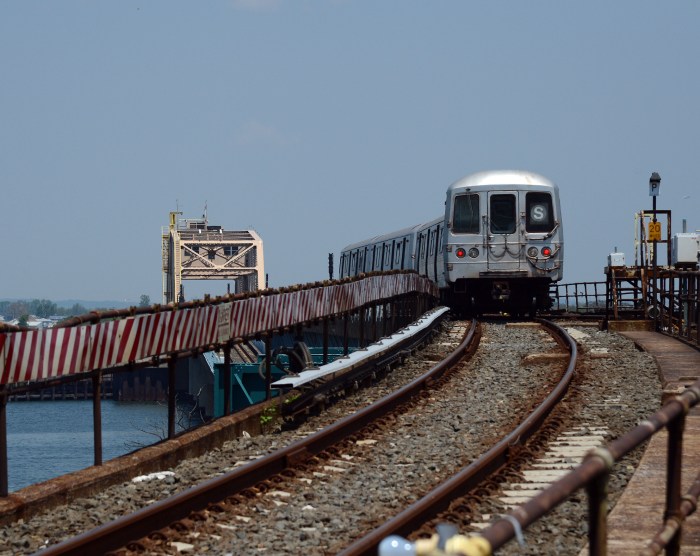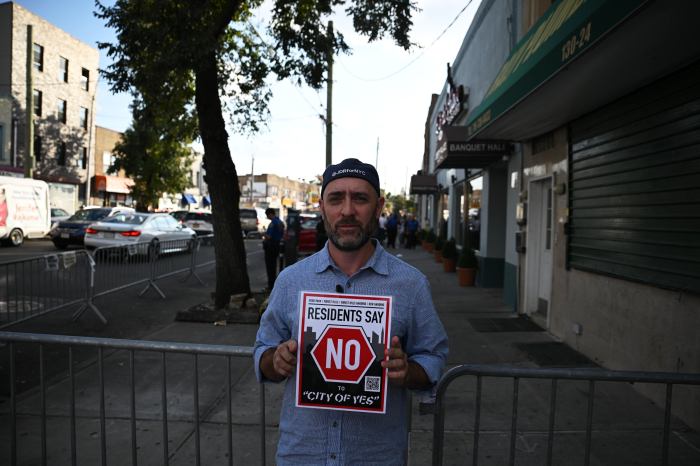Outrage swirled and questions mounted as the MTA doled out blame for the A train derailment in Harlem that injured 39, wrought extensive tunnel damage and sunk subway service citywide on Tuesday.
Two maintenance track supervisors were suspended without pay after an unsecured, improperly stored scrap rail on the express tracks caused two cars of the eight-car train to leave their track, ripping out a chunk of concrete from a wall as they careened off course near the 125th Street station.
One rider on the derailed train is preparing a personal injury claim against the agency and frustrated commuters rallied outside Gov. Andrew Cuomo’s offices in midtown on Wednesday night, demanding a tangible plan to improve declining subway service.
“Ultimately, the MTA was responsible for the misplaced rail that disrupted the lives and commutes for thousands of New Yorkers on Tuesday,” said Jaqi Cohen, campaign coordinator for the NYPIRG Straphangers Campaign, one of the groups that participated in the midtown rally. “Riders are feeling really frustrated … we want to tell the governor that we’re expecting a strong plan to fix the subways and not continued finger pointing.”
The derailment can be traced back to work done on the track the night before, according to the MTA. Crews had just replaced the rail near the scene of the derailment hours earlier, on Monday night.
A 13-foot piece of scrap rail from that job was stored loose on the tracks, according to MTA spokeswoman Beth DeFalco, and it derailed the A train the next morning
Storing spare rails on tracks is a common industry-wide practice to ensure that rails with defects can be swapped out quickly, according to DeFalco. And securing those spares to the track is a relatively simple procedure that could take five minutes, MTA union representatives said.
But that rail at 125th Street should have never been left on the tracks, according to the agency. At 13 feet, protocol followed by the MTA outlines that the rail is considered to be too short to be safely stored on that express track, DeFalco said.
It would have had to be longer than 19.5 feet in order to be safely tied down, a source familiar with the ongoing investigation said.
“We strategically store material for expedient repairs, e.g., if there is a rail condition detected during inspections, so that a team can be deployed for repair immediately without delay of having to carry a 1,200 pound rail over because it is already close by,” DeFalco said. “There are proper protocols to ensure equipment is fastened and cannot shake loose and that equipment that is too small to be safely stored is never stored in between tracks.”
Michael Carrube, president of the Subway Surface Supervisors Association, which represents about 4,000 MTA bus and subway supervisors, vowed to fight the suspensions.
“It is completely outrageous for the Transit Authority to immediately suspend two of my members, without pay, before a thorough investigation has been completed,” Carrube said in a statement.
Recently appointed MTA chairman Joe Lhota, just days on the job, pledged to inspect “every inch” of track to ensure that no other equipment was improperly stored, adding in a joint statement Tuesday night with acting executive director Ronnie Hakim that “nothing is more important than the safety of our customers.”
Sheena Tucker, 31, of Harlem, was on the A train during the derailment and is preparing a $5 million notice of claim against the MTA. Tucker claims the derailment left her with spinal injuries and anxiety.
“She was in pain. It’s a serious problem when you have a spinal disc injury,” said her attorney, Sanford Rubenstein. “She’s concerned about taking the train again.”
About 500 people stuck in stalled trains near the derailment exited their cars and walked onto the tracks, risking their lives trying to escape in what was the latest and most dramatic of a cascading series of service failures.
“As the governor previously said, the current state of the system is unacceptable and New Yorkers deserve better,” said Dani Lever, a spokeswoman for Cuomo. “Joe Lhota is a proven manager and the state will provide the MTA with the support it needs to address the fundamental issues plaguing the system.”
In addition to delivering a comprehensive plan to improve service, the MTA could potentially save future injury or possible death simply by improving its communications with passengers during delays, Cohen said.
“Riders are feeling like they’d rather jump off the train than listen to instruction they don’t trust,” Cohen said. “Improving communication should be a top priority. It’s something that the MTA can do right now — be more transparent to the riders and tell riders what’s really going on.”
With Ivan Pereira


































